GHB is the common shorthand for gamma hydroxybutyrate, a drug of abuse identified as both a “club drug” and a “date rape” drug. People who use this drug repeatedly over time can develop a severe form of drug withdrawal that has the potential to produce fatal results. In a study published in February 2014 in the journal Drug and Alcohol Dependence, a team of Dutch researchers investigated the best options for treating individuals affected by GHB withdrawal. These researchers concluded that the appropriate option varies according to any given person’s level of involvement with GHB use.
What Is GHB?
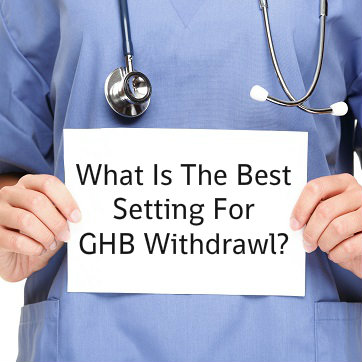 GHB occurs naturally inside the human brain, but only in small amounts. Trace amounts of the chemical also appear in certain types of wine and beer. A specific form of pharmaceutical GHB, called sodium oxybate (Xyrem), has legitimate medical use as a treatment for the sleep disorder narcolepsy. However, access to this medication is strictly controlled through federal law, and most people who use/abuse GHB recreationally rely on illegally produced batches made by clandestine drug manufacturers.
GHB occurs naturally inside the human brain, but only in small amounts. Trace amounts of the chemical also appear in certain types of wine and beer. A specific form of pharmaceutical GHB, called sodium oxybate (Xyrem), has legitimate medical use as a treatment for the sleep disorder narcolepsy. However, access to this medication is strictly controlled through federal law, and most people who use/abuse GHB recreationally rely on illegally produced batches made by clandestine drug manufacturers.
GHB alters normal brain and body function by reducing the rate of communication inside the central nervous system. The baseline effects of this reduction include both sedation and a form of euphoric intoxication. In addition, roughly two-thirds of all users of the drug lose consciousness. The euphoric and sedating effects of GHB largely account for its use as a club drug. The sedating and unconsciousness-producing effects of GHB largely account for its use as a date rape drug; its use as a date rape drug also stems from its ability to trigger amnesia. Other known potential effects of GHB use include hallucinations, nausea, vomiting, confusion, headaches and loss of body control. People who overdose on the drug can develop seizures, experience a dangerous decline in normal lung function, go into a coma or die.
Addiction To GHB And Withdrawal From It
When used repeatedly over time, GHB can trigger the long-term changes in brain function required to produce substance addiction. One of the classic signs of any form of drug or alcohol addiction is the onset of withdrawal symptoms when substance use ends or tapers off rapidly. In the case of GHB addiction, potential withdrawal symptoms include excessive sweat production, a highly anxious mental state, uncontrollable body tremors and sleeplessness. Some people develop severe forms of these symptoms that can lead to highly debilitating or even fatal changes in brain and body health.
What Is The Withdrawal Treatment Setting?
In the study published in Drug and Alcohol Dependence, researchers from three Dutch institutions sought to establish guidelines for the best way to address the effects of GHB withdrawal. They undertook this work because, despite the potentially severe nature of this withdrawal, some individuals may recover well in an outpatient setting rather than in a hospital. The researchers began the project by gathering case studies of patients going through GHB withdrawal from 40 professionals specializing in addiction medicine. These case studies were reviewed by another 15 addiction specialists who made recommendations for hospitalization or outpatient care for each patient under consideration. In the study’s third and final stage, five specialists with extensive experience in treating GHB withdrawal reviewed the rationale used for assigning any given patient to hospitalization or outpatient treatment.
All told, 20 patients going through GHB withdrawal were assessed and/or reviewed by the three groups of experts. The researchers concluded that two main factors account for the decision to either hospitalize a person going through withdrawal or recommend outpatient treatment: the amount of GHB used each day and the frequency of GHB intake. As a rule, patients who take 32 grams or more of the drug every day and use the drug at least every two hours require hospitalization when going through withdrawal. Patients who take smaller daily amounts of the drug and use the drug less than every two hours are potential candidates for outpatient withdrawal treatment.
The authors of the study published in Drug and Alcohol Dependence note that people with diagnosable psychiatric problems who go through GHB withdrawal may also require hospitalization rather than outpatient care. Conversely, people with strong support networks have an increased chance of receiving outpatient treatment when going through withdrawal. The authors believe that, overall, their work provides a solid framework that doctors can use when determining the best treatment setting for a person withdrawing from GHB use.
Not all people get involved in substance abuse for the same reason. Broadly speaking, some people are motivated primarily by the desire to increase their experience of pleasure, while others are motivated primarily by the desire to escape or avoid painful experiences. According to the results of a study published in March 2014 in the journal Addictive Behaviors, the underlying reasons for marijuana use have a significant impact on the results of treatments designed to address cannabis addiction. It appears that addicts motivated by pain avoidance have a harder time maintaining their recovery than their peers motivated by pleasure-seeking.
What Is Cannabis Use Disorder?
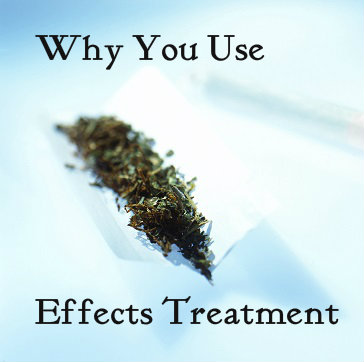 Marijuana or cannabis addiction is officially classified as part of a larger condition called cannabis use disorder. Some people affected by this disorder are not addicted to marijuana or other forms of cannabis, but still experience serious life impairment as a result of their drug use. Other affected individuals have undergone the long-term changes in brain chemistry that set the stage for marijuana/cannabis addiction and all other forms of substance addiction. Many people think that marijuana/cannabis addiction is a rare phenomenon. However, current evidence indicates that nine out of every 100 users of marijuana will develop symptoms that qualify them for an addiction diagnosis. Teenage marijuana users develop diagnosable addiction symptoms at close to twice this rate. In addition, addiction rates skyrocket among daily users of all ages; one-quarter to one-half of these individuals will eventually develop diagnosable symptoms.
Marijuana or cannabis addiction is officially classified as part of a larger condition called cannabis use disorder. Some people affected by this disorder are not addicted to marijuana or other forms of cannabis, but still experience serious life impairment as a result of their drug use. Other affected individuals have undergone the long-term changes in brain chemistry that set the stage for marijuana/cannabis addiction and all other forms of substance addiction. Many people think that marijuana/cannabis addiction is a rare phenomenon. However, current evidence indicates that nine out of every 100 users of marijuana will develop symptoms that qualify them for an addiction diagnosis. Teenage marijuana users develop diagnosable addiction symptoms at close to twice this rate. In addition, addiction rates skyrocket among daily users of all ages; one-quarter to one-half of these individuals will eventually develop diagnosable symptoms.
Emotional Motivations
Much of human behavior stems from the conscious or unconscious impact of various emotions and emotion-based motivations. Psychologists commonly refer to pleasure-seeking motivations as “positive” reasons for engaging in a behavior. Conversely, they commonly refer to pain-avoidance motivations as “negative” reasons. When it comes to substance intake, the terms “positive” and “negative” don’t mean that some people have “good” reasons for using drugs or alcohol while others have “bad” reasons. Instead, they simply mean that some people use drugs and alcohol because they believe that substance use will enhance their pleasurable experiences, while others use drugs or alcohol because they believe that substance use will help them avoid feeling bad or escape current bad feelings. Individuals with “positive” motivations for substance use can develop problems with abuse and/or addiction just like people with “negative” motivations. However, the two groups of substance users typically hold distinctly different mental/emotional points of view about themselves, their surroundings and their experiences.
Impact On Treatment Outcomes
In the study published in Addictive Behaviors, researchers from the University of Washington and Virginia Polytechnic Institute and State University looked at the treatment outcomes of marijuana addicts whose drug use stems from “negative” motivations. They conducted their work with information gathered from 87 adults who underwent treatment for issues related to a chemical reliance on marijuana. These participants provided information on the reasons they used marijuana in any given situation. In turn, for each participant, the researchers matched these motivations to three known markers of diminished mental well-being: lack of belief in the ability to control one’s behavior, use of ineffective coping strategies to deal with unpleasant emotions and an impairing state called psychological distress.
The researchers concluded that marijuana addicts who use the drug for “negative” reasons have increased chances of believing they can’t control their actions, using ineffective coping mechanisms to deal with their emotions and developing substantial amounts of psychological distress. The researchers also concluded that each of these adverse impacts develops independently of the others, which means that attempts to address one of the three issues will not reduce risks for the other two. In addition, the researchers found that, compared to marijuana addicts who don’t use the drug for “negative” reasons, marijuana addicts who do use the drug for these reasons have greater problems achieving or maintaining abstinence from marijuana intake after they complete their treatment programs.
The authors of the study published in Addictive Behaviors note that their new findings echo previous research efforts that indicate that “negative” reasons for drug or alcohol use produce more problems during recovery than “positive” reasons for drug or alcohol use. Current psychotherapeutic approaches for people affected by marijuana addiction typically focus on dealing with unpleasant or unwanted emotional states. The study’s authors believe that their work validates this approach and serves as an additional reason for continuing to focus on treating “negative” emotions in people who develop cannabis-related addiction issues.
Read About The Most Abused Substances To Self-Medicate Anxiety
Methadone is an opioid medication sometimes used to treat people addicted to heroin or other powerful opioid drugs. Affected individuals commonly receive this medication on an ongoing basis rather than for a limited period of time. This pattern of usage can potentially create conflicts with participation in self-help support groups called 12-step groups, which typically place a high emphasis on complete drug and alcohol abstinence. In a study published in late 2013 in the Journal of Groups in Addiction & Recovery, researchers from three U.S. institutions sought to determine how many people receiving methadone also participate in a 12-step program.
What Is Methadone?
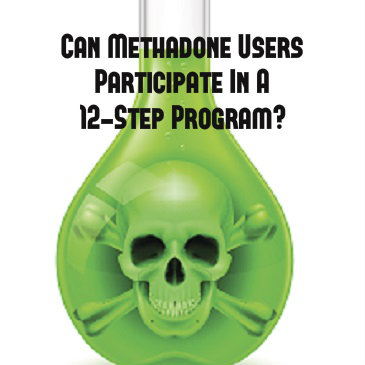 While methadone is an opioid substance, it has somewhat different properties than heroin or other opioid drugs of abuse. Those drugs are characterized by their ability to produce the rapid onset of a highly pleasurable state. Methadone, on the other hand, produces effects that build more slowly and result in a relatively low level of euphoric sensation. Doctors can exploit these properties and use methadone as a substitute for opioid drugs of abuse. Although an addict using methadone still has opioids in his or her bloodstream, he or she typically experiences a substantial reduction in the risk of drug-related harm. Although some addicted individuals receive only short-term methadone treatment, others participate in methadone maintenance treatment, an ongoing approach that uses methadone as an opioid drug replacement for extended periods of time.
While methadone is an opioid substance, it has somewhat different properties than heroin or other opioid drugs of abuse. Those drugs are characterized by their ability to produce the rapid onset of a highly pleasurable state. Methadone, on the other hand, produces effects that build more slowly and result in a relatively low level of euphoric sensation. Doctors can exploit these properties and use methadone as a substitute for opioid drugs of abuse. Although an addict using methadone still has opioids in his or her bloodstream, he or she typically experiences a substantial reduction in the risk of drug-related harm. Although some addicted individuals receive only short-term methadone treatment, others participate in methadone maintenance treatment, an ongoing approach that uses methadone as an opioid drug replacement for extended periods of time.
What Is A 12-Step Program?
Twelve-step programs get their name because they emphasize participation in a series of 12 consecutive “steps” as the key to overcoming a reliance on drugs or alcohol (or certain harmful behaviors). The specific steps undertaken vary from program to program; however, common features of most programs include admitting powerlessness over one’s harm-producing behavior, seeking some sort of spiritual assistance to cope with harm-producing behavior, assuming moral accountability for one’s harmful actions and making amends to people who suffer from one’s harmful actions.
As a rule, 12-step programs emphasize the need to stay substance-free. In order to help group members achieve this goal, they employ a sponsor system that relies on longer-term members to mentor shorter-term members and provide the encouragement needed to remain abstinent from substance use. Two of the most well known 12-step groups in the U.S. are Alcoholics Anonymous and Narcotics Anonymous.
How Many Methadone Users Participate In A 12-Step Program?
In the study published in the Journal of Groups in Addiction & Recovery, researchers from the Institute for Behavior and Health, Chestnut Health Systems and Partners in Drug Abuse Rehabilitation and Counseling investigated the degree of overlap between participation in methadone maintenance treatment and participation in a 12-step program. They conducted this investigation with the help of 322 adults currently participating in methadone programs. These adults were asked to submit information on their involvement in Alcoholics Anonymous and Narcotics Anonymous during the year prior to the start of the study. The researchers also asked them to detail their level of adherence to these 12-step groups’ program requirements.
The researchers found that fully two-thirds of the adults participating in methadone maintenance treatment also had a history of recent involvement with Alcoholics Anonymous, Narcotics Anonymous or both 12-step groups. Seventy-two percent of these individuals reported receiving important benefits from their involvement in Alcoholics Anonymous, while 77 percent reported receiving benefits from their involvement in Narcotics Anonymous.
Does A 12-Step Program Work For Methadone Users? And Why Are They Hiding Their Methadone Use?
However, the researchers concluded that, compared with 12-step members not using methadone, the methadone patients had a substantially smaller overall level of program involvement. For example, only half of the methadone-using members regularly attended meetings with a single group of 12-step practitioners. Only a quarter of the methadone-using members worked with a sponsor, and only 13 percent of these members ended up acting as sponsors for others. In addition, only 21 percent of the methadone users vigorously pursued the completion of the 12 steps that form the basis of 12-step programs.
The authors of the study published in the Journal of Groups in Addiction & Recovery found that roughly a quarter of all the methadone users who attended Alcoholics Anonymous or Narcotics Anonymous felt that their status as methadone recipients negatively affected their 12-step experiences. In addition, roughly one-third of all the methadone users actively hid their participation in methadone maintenance treatment from their 12-step peers. Altogether, the study’s findings indicate that methadone users who participate in 12-step programs experience widely varying outcomes from that participation.
Read About The Facts And Myths Of Methadone
13 Mar 2014
Pregnant And Addicted – What Now?
Battling addiction and striving to achieve sobriety are some of the most difficult challenges a person can face. Addicts have to suffer through terrible withdrawal symptoms while detoxing, go through therapy and rehab and then face a lifelong struggle with the prospect of a relapse. Now imagine facing this demon while pregnant; it is the struggle that too many women encounter. Along with the difficulty of coming clean, they face the shame and embarrassment, the possibility of losing their children and unique health challenges. Getting sober is essential for the health of the mother and the baby.
What Are The Barriers To Treatment For Expecting Mothers?
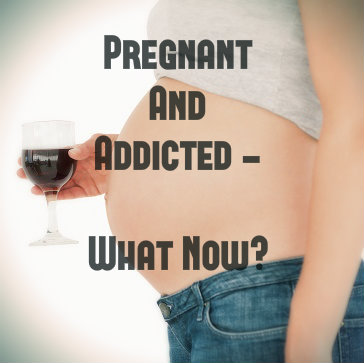 For many women who find themselves both addicted to drugs and unexpectedly pregnant, the idea of getting help is a daunting one. Women in this position tend to feel extreme guilt, shame and fear. A pregnant woman needing addiction treatment may avoid getting help for fear of being judged and vilified. She may also face the fear of losing her newborn after admitting to being an addict.
For many women who find themselves both addicted to drugs and unexpectedly pregnant, the idea of getting help is a daunting one. Women in this position tend to feel extreme guilt, shame and fear. A pregnant woman needing addiction treatment may avoid getting help for fear of being judged and vilified. She may also face the fear of losing her newborn after admitting to being an addict.
What addicted pregnant women need is compassionate care from doctors and other health professionals who understand the special needs of these patients. Without care, these women and their children will suffer. For instance, some women may try to take the matter into their own hands and quit cold turkey, which can actually be harmful to the baby.
The Consequences Of Addiction On The Fetus
For the unborn child, the consequences of a mother’s addiction can be serious. The baby will most likely be born with neonatal abstinence syndrome. This is a collection of symptoms caused by the drugs the mother uses. The baby is born addicted and then experiences withdrawal. Symptoms may include blotchy skin, poor feeding habits, irritability, diarrhea, high-pitched crying, seizures, insomnia, slow weight gain, fever, sweating, trembling and vomiting. Withdrawal in the baby is not the only concern; drug use can lead to complications during labor and delivery.
Pregnant Addicts On The Rise – Finding Solutions
As the number of people in the U.S. addicted to opioids (prescription painkillers and heroin) rises, the number of mothers and infants affected also rises. Statistics indicate that the number of babies born with neonatal abstinence syndrome has more than doubled in the last six years. In 2012, nearly 6 percent of pregnant women were using illegal drugs. The increases are being seen across the country and among all demographic groups. The healthcare costs are rising with the number of addicted babies.
Healthcare professionals are stepping up and looking for solutions to treating these women and their babies. With compassion and tested methods for treatment, they can help women feel comfortable asking for help with addiction. More hospitals and addiction centers are offering specialized care for pregnant women as the problem grows. Although many experts in the past have considered use of maintenance drugs, like methadone, to be bad for the unborn child, doctors now know that maintenance is often the best option. Withdrawal in the pregnant mother can be very dangerous for the baby.
Many of these new programs include not just cutting-edge treatment for addiction in the mother, but also the goal of continuing that care after the baby is born to ensure the mother has the best chance of staying sober and caring for her children. The programs also include plans for reducing complications during delivery and maximizing the odds of having a healthy baby. Many plans also help these new mothers with family planning and parenting skills, as well as long-term care for themselves and their children. With good care that is specialized for their needs, pregnant women have hope for a successful birth and healthy child.
Read More About Drinking During Pregnancy And Find Out Why Women Continue To Drink
Getting professional support and care for your addiction is an essential element in your journey toward sobriety. Addiction, whether to alcohol or drugs, is a disease. It is a chronic disease that requires treatment. You need to learn skills that you will use for the rest of your life to avoid using again. Because professional care is so important to recovery, it is a good idea to spend some time finding the facilities and the caregivers that will best match your needs. No single approach or treatment philosophy works for everyone. You need to find what works for you by doing some research and asking questions.
Will Your Family Support You In Recovery?
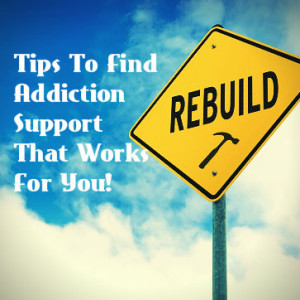 Besides professional care, having the love and support of family and friends is one of the most important tools for recovery. If you have no one you can rely upon for support, you may benefit from a residential rehab facility. This is the type of place in which you stay overnight for a week, a few weeks, or even a month. The support system is built in to the program and includes your fellow patients, counselors, doctors, nurses and staff members.
Besides professional care, having the love and support of family and friends is one of the most important tools for recovery. If you have no one you can rely upon for support, you may benefit from a residential rehab facility. This is the type of place in which you stay overnight for a week, a few weeks, or even a month. The support system is built in to the program and includes your fellow patients, counselors, doctors, nurses and staff members.
Do You Need Flexibility In Your Care?
If your family is available and actively willing to support you in your recovery, you could consider an outpatient program. Another reason to consider outpatient care is if you have other responsibilities that you cannot neglect for the weeks or months needed for residential care. Outpatient programs are designed to have flexible schedules so that you can get the support you need for addiction while still going to work during the day, keeping up with your classes at night, and meeting your family obligations on a day-to-day basis.
Will Religion Help You Stay Clean?
If you have a strong faith, you can find rehab facilities and treatment programs that include a religious element. Many people find that their beliefs are what help them the most when it comes to getting sober and staying clean. If this sounds like you, look for a facility or a program that is faith-based.
Do You Have Concerns About Mental Health?
It is not uncommon for addicts to also struggle with one or more mental health issues. If you have been diagnosed with depression, anxiety disorder, schizophrenia, bipolar disorder or any other mental illness, you need to receive care for your illness as well as for your addiction. The two are most likely intertwined. Make sure you look for a facility that recognizes the importance of a dual diagnosis. It is essential that you work with caregivers who are experienced at working with mental health and addiction together in order to get the best treatment.
How Will You Pay For Addiction Treatment?
Finally, make sure you select a treatment plan that you can afford to finish. There is no point in starting a treatment program only to quit early due to financial stress. If you have health insurance, find out what facilities and programs are covered. If you will be paying out of pocket, determine how much you can afford to spend and use that as part of your criteria for selection.
Finding the right treatment for addiction is important to your success. Treatment programs are not one-size-fits-all and to give yourself the best chance, you really need to shop around for the program and the professionals that will meet your needs. The Substance Abuse and Mental Health Services Administration is a good place to start for information. Take the time to read up and to make a wise choice.
Read More About Why You Need Fellowship To Recover From Addiction
A dual diagnosis means that you have a substance abuse problem, or an addiction, and you also have been diagnosed as having a mental illness. The co-occurrence of addiction and mental illness is not uncommon. If you receive a dual diagnosis, rest assured that you are not alone, but also know that you need to be treated for both issues. There are plenty of rehab facilities and caring, trained professionals who can help you work through both and help guide you through recovery.
How Many People Receive A Dual Diagnosis?
 A dual diagnosis is a fairly common occurrence. According to statistics from the National Alliance on Mental Illness, around half of all people with a severe mental illness also struggle with substance abuse. On the flipside, over one-third of people who abuse alcohol, and more than half of people who abuse drugs, are affected by mental illness. Some of the more common mental illnesses that are diagnosed with substance abuse include depression, anxiety disorder, schizophrenia, and bipolar disorder.
A dual diagnosis is a fairly common occurrence. According to statistics from the National Alliance on Mental Illness, around half of all people with a severe mental illness also struggle with substance abuse. On the flipside, over one-third of people who abuse alcohol, and more than half of people who abuse drugs, are affected by mental illness. Some of the more common mental illnesses that are diagnosed with substance abuse include depression, anxiety disorder, schizophrenia, and bipolar disorder.
Why Do Substance Abuse And Mental Illness Co-Occur?
There are several possible reasons it is so common to have both a mental illness and an addiction. The relationship is complicated and can be caused by different factors depending on the individual. If you have a mental illness, especially if you are not seeking treatment for it, you may find that you turn to drugs or alcohol as a way of self-medicating. By getting high, you may be able to momentarily push away the pain and bad feelings associated with your mental illness.
Another factor in dual diagnosis is the possibility that substance abuse triggers or worsens a mental illness. Some people use drugs or alcohol and then begin to experience the onset of mental illness symptoms for the first time. If you have an undiagnosed mental illness, like depression, and abuse drugs, you can make it worse.
Why Is It Important To Treat Both Mental Illness And Addiction?
If you receive a dual diagnosis, you must treat both conditions in order to have a chance at being well. If you get into recovery for your addiction, but ignore your mental illness, you are likely to go back to using. On the other hand, if you get help for your mental illness and fail to address your substance abuse problem, you can expect to experience relapsing symptoms of your disorder.
How Are Mental Illness And Addiction Treated Together?
Experts agree that an integrated approach to treatment is the best option for a dual diagnosis. This means that mental health professionals and addiction specialists work together with you in the same place. For instance, you might enter into a rehab facility that specializes in diagnosing and treating mental disorders along with substance abuse problems. By targeting both issues, at the same time and in the same place, you will have the best odds of success. The two problems are intertwined and to get at one, you must address the other.
Effective integrated treatment for a dual diagnosis includes several components. Care is given in stages, beginning with developing a relationship with your caregivers. Interventions that motivate you to stop using are important. Counseling for both mental illness and substance abuse should be included. Finally, having social support, whether that means working with peers or with family, is essential for good care.
If you have been surprised with a dual diagnosis, take time to learn about your options. Make sure that you get help from professionals who understand your particular needs and who will approach your care by addressing both of your issues.
See How Mental Illness And Substance Abuse Are Leading Causes of Non-Fatal Disease
Addiction to opioid drugs, like heroin, is a terrible disease and one that is difficult to overcome. Even with the best treatment and addiction professionals, coming clean from opioids and staying clean is a huge challenge. The impact that these drugs have on the brain and the body is so strong that it takes a major effort to stop using them. For this reason, researchers have worked on developing medications to help addicts. One such drug is Suboxone and it can help heroin and other opioid addicts stay sober. However, as an opioid itself, this medication can also be abused.
Withdrawal Symptoms Of Opioids
One of the main reasons quitting opioid drugs is so difficult is the severity of withdrawal symptoms. Taking addictive drugs repeatedly leads to changes in the brain. An addict needs the drug simply to feel normal again. When an opioid addict goes off his drug, he will experience anxiety, agitation, insomnia, achiness, sweating and a runny nose in the early stages. As withdrawal progresses, the symptoms get worse and include cramps, diarrhea, nausea and vomiting. These symptoms are extremely uncomfortable and lead many addicts to start using again.
What Is Suboxone?
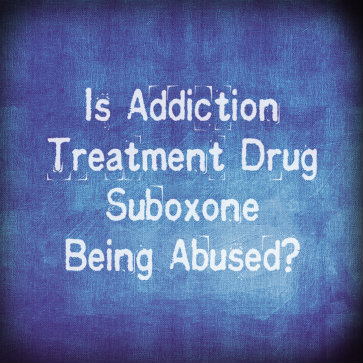 Suboxone is a drug with active ingredients called buprenorphine and naloxone. Together these ingredients reduce the symptoms of withdrawal from opioid drugs. When an addict gets relief from the terrible symptoms of withdrawal, he is more likely to stay sober. There are a few risks associated with taking Suboxone, and potential side effects such as cold-like symptoms, sweating and headaches.
Suboxone is a drug with active ingredients called buprenorphine and naloxone. Together these ingredients reduce the symptoms of withdrawal from opioid drugs. When an addict gets relief from the terrible symptoms of withdrawal, he is more likely to stay sober. There are a few risks associated with taking Suboxone, and potential side effects such as cold-like symptoms, sweating and headaches.
Suboxone has been proven by research to be effective in helping opioid addicts stay clean. In one study, nearly half of the addicted participants using Suboxone were able to reduce their use of narcotic opioid painkillers. The success rate dropped to below 10 percent when the participants stopped using Suboxone.
How Is Suboxone Able To Be Abuse?
Although it is an opioid, just like narcotic painkillers and heroin, Suboxone’s impact on the brain is much less than the more addictive drugs. However, there is still the potential for abuse. Another opioid that has been used to treat heroin addicts for decades, methadone, has a much greater potential for abuse than Suboxone. As a result, methadone is tightly controlled. Suboxone can be prescribed in a doctor’s office and the addict can take it home. This more lax approach to dispensing Suboxone leaves the door open for abuse.
Overdose And Death From Suboxone?
Furthermore, because regulations are not as tight as with methadone, many users don’t realize that it is possible to overdose and die from taking too much Suboxone.
Recent reports in the news illustrate the problems associated with Suboxone. Although it can help addicts get clean, it is clear that some people are abusing it and using it to get high rather than to stay sober. In New York, people have been arrested recently for trying to sell Suboxone. Not only are addicts being prescribed the drug abusing it, it’s also entering the illicit marketplace and being sold to non-addicts looking for a high. Arrests have also been made in Virginia and other states.
Drugs like Suboxone are important for helping people who desperately want to stop using heroin and other opioids. However, no error-free drug has yet been developed. As long as there is any possibility of getting high on a medication, the drug will be abused by someone. Doctors need to take great care in prescribing these medications and policy makers must consider whether restrictions need to be tightened to prevent further abuse.
Read More About Buprenorphine Treatment For Opioid Addiction
Baclofen is the name of a medication originally developed to treat people affected by severe muscle spasms. Increasingly, doctors also use this medication as an off-label treatment for alcohol cravings in people going through treatment for alcoholism. In a study published in February 2014 in the journal Alcoholism: Clinical & Experimental Research, a team of French researchers assessed the dose of baclofen required to provide effective treatment for alcoholics. These researchers concluded that the effective dose of the medication can vary widely for no clear underlying reason.
How Baclofen Works And What It’s Used For
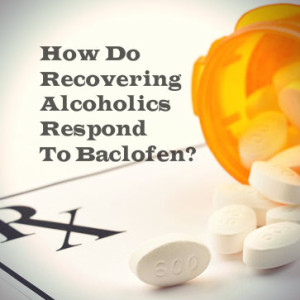 Baclofen produces a muscle-relaxing effect by altering the rate of nerve cell communication inside the spinal cord, which forms part of the central nervous system. This effect does not cure the underlying causes of severe muscle spasms; however, it does reduce the intensity of those spasms and forms part of a larger overall treatment regimen.
Baclofen produces a muscle-relaxing effect by altering the rate of nerve cell communication inside the spinal cord, which forms part of the central nervous system. This effect does not cure the underlying causes of severe muscle spasms; however, it does reduce the intensity of those spasms and forms part of a larger overall treatment regimen.
The most well-known condition treated with baclofen is multiple sclerosis, which damages the protective coatings of the spinal nerves and nerves inside the brain. Some people also receive the medication for certain forms of spinal disease or in the aftermath of traumatic injuries that have an impact on spinal cord function. Baclofen is available in tablet form in the U.S. under the brand names Kemstro and Lioresal.
Baclofen’s Use In Alcoholism Treatment
Once a medication receives FDA approval for treatment of one condition, doctors sometimes adopt that medication as a treatment for other conditions. This type of use is commonly known as off-label use. In the early 2000s, doctors began using baclofen as an off-label treatment for alcoholism (a condition which forms part of a larger health diagnosis called alcohol use disorder). The medication achieves its positive effects in this role by helping to ease constant or recurring cravings for alcohol intake.
As a rule, these cravings play a critical role in establishing and reinforcing alcohol dependence, which is the underlying alteration in brain chemistry responsible for the onset of alcoholism. In a study published in 2012 in the journal Frontiers in Psychiatry, a team of French and Italian researchers investigated the effectiveness of baclofen in reducing alcohol cravings. These researchers found that the medication is highly effective in this role, and therefore can make significant contributions toward breaking the cycle of alcohol use in people going through the alcoholism recovery process.
Varying Dosages Of Baclofen
Effective doses of baclofen can vary widely between individuals going through alcoholism treatment. The low end of the typical dosage range is 30 mg per day; people at the high end of the range can require as much as 240 mg per day. In the study published in Alcoholism: Clinical & Experimental Research, researchers from two French institutions tried to find out which factors help determine whether a given person will need a low daily dose of baclofen or a high daily dose. They conducted their work with information gathered from 37 adults (ranging in age from 31 to 68) going through alcoholism treatment. Specific factors looked at as potential influences on the required dose of baclofen included level of involvement in smoking, blood levels of 10 naturally occurring substances that can indicate changes in normal body function and basic demographic attributes such as gender, height, age and weight.
After completing their work, the researchers concluded that the differences in the daily required doses of baclofen stem from the widely varying rates at which the human body can absorb and distribute the medication. Simply put, some people experience relatively rapid absorption and distribution, while others experience relatively slow absorption and distribution. Critically, after examining all of the potential factors that could influence the body’s use of baclofen, the researchers could not find anything that would explain the different rates of use that appear in people going through alcoholism treatment.
Unique Differences In Absorption Of Baclofen And High Dose Side Effects
The authors of the study published in Alcoholism: Clinical & Experimental Research believe that individual differences in the absorption and distribution of baclofen may help explain why some people either require large doses of the medication to receive a benefit or don’t benefit from the medication at any reasonable dosage. This is extremely important information, since the use of high doses of baclofen can potentially produce severe forms of side effects such as lightheadedness, sleepiness, muscle weakness, mental disorientation, convulsions or disrupted breathing. Further research will be needed to determine exactly what accounts for the wide variations in baclofen’s relative effectiveness.
Read More About How Alcoholics Refuse To Get Treatment Due To Stigma


